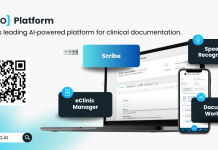This guide provides a strategic framework for government leaders to align cloud platforms, high-quality data, and AI responsibly. It is designed to help agencies make confident technology decisions, achieve operational efficiency, and deliver services that meet the evolving expectations of ministers and citizens
Government agencies are under growing pressure to deliver secure, transparent, and efficient services to the public and stakeholders. Cloud platforms, AI, and modern data architecture are no longer separate initiatives but interdependent enablers of government productivity. While adoption of cloud and digital services across government has increased significantly, many projects fail to deliver lasting value because integration, governance, and data quality remain inconsistent. This guide provides a strategic framework for government leaders to align cloud platforms, high-quality data, and AI responsibly.
What you’ll gain:
- Proven architecture patterns for secure, scalable, multi-cloud government services.
- Guidance on responsible deployment of AI and large language models (LLMs).
- A practical quality-by-design approach for public sector data management.
- Insights into enabling continuous improvement without service disruption.
Architecture patterns that scale
Delivering scalable, secure, and resilient government services requires adopting proven architecture patterns that can handle both current demands and future growth. These patterns enable departments to respond rapidly to operational needs, integrate with legacy systems, and ensure compliance while maintaining efficiency.
- Data Mesh: Breaks down data silos by decentralising ownership of data products across departments, while maintaining shared governance.
This enables departments to generate, use, and share data as trusted assets, improving transparency and decision-making. - Event-DrivenSystems:Allow real-time capture and response to events such as application submissions, policy changes, or citizen requests. These systems ensure responsiveness and efficiency by processing data immediately as it is generated.
- Microservices with Load-Balanced Application Servers: Breaks applications into smaller, independently deployable services that can scale separately. A public records portal, for example, could scale its ‘search’ service independently of authentication or notifications, ensuring optimal performance.
- Container Orchestration with Kubernetes: Packages applications into containers and deploys them across a server cluster, enabling automated scaling, recovery, and updates. This allows systems, such as licensing platforms, to expand submission processing at peak times while maintaining stability for other services.
- API-Centric Architecture with Gateway Servers: Uses an API gateway to centralise and secure interactions across multiple government services. This model enables departments to expose data securely to the public, businesses, and other agencies, while ensuring scalability and compliance.
Responsible AI in public services
AI must be deployed responsibly to avoid reputational and regulatory risk. Governments must embed accountability, fairness, and transparency into every AI system.
Five key principles:
- Accountability: Clear ownership of AI design, deployment, and oversight.
- Transparency: Interpretable models and decision traceability.
- Fairness: Bias detection and mitigation to protect vulnerable groups.
- Data Governance: Strong privacy and compliance safeguards.
- Risk and Compliance Integration: Ongoing alignment with evolving regulations (e.g., GDPR, AI Act).
From structured records to intelligent government: AI and LLMs
AI and large language models are creating opportunities to transform how governments interact with citizens, manage operations, and enforce policies. However, success depends on readiness.
Common causes of project failure:
- Poor data quality undermining model performance.
- Rigid architectures are unable to adapt.
- Black-box AI systems failing regulatory scrutiny.
- Weak alignment between AI use and public service outcomes.
Essential AI priorities for government
- Data Validation at Ingestion: Ensuring accuracy and completeness at the source.
- Real-Time Data: Maintaining consistent and governed inputs for AI.
- Monitoring & Retraining: Detecting model drift and ensuring fairness.
- Comprehensive Audit Trails: Delivering full transparency for compliance and trust.
The role of LLMs in public services
Generative AI and LLMs can power:
- Automated citizen query responses with source validation.
- Policy and compliance guidance with contextual explanations.
- Summarisation of lengthy government reports.
- Knowledge management across departments.
For governments, LLM adoption must be grounded in explainability, transparency, and fairness to maintain accountability.
Data quality and governance in government
Poor data quality in public services creates inefficiencies, errors, and compliance risks. The AI Amplification Effect means even small inaccuracies scale dramatically when automated processes are introduced.
The cost of poor data quality
- Errors in citizen records lead to mistrust and service delays.
- Fragmented datasets make compliance reporting unreliable.
- Inconsistent data increases costs through duplication and manual intervention.
Quality-by-design for government
- Validation at Entry: Ensuring data quality when citizens or departments submit information.
- Automated Profiling: Continuous monitoring of datasets to detect anomalies.
- Self-Healing Pipelines: Automated correction and reprocessing of failed records.
- Lineage Tracking: Full transparency of how data is used, critical for audits and FOI requests.
This approach ensures that data supports both compliance and advanced technologies, such as AI.
Continuous improvement without disruption
Digital transformation in government cannot rely on disruptive overhauls. Instead, evolutive maintenance ensures systems adapt incrementally to meet new demands, regulations, and technologies.
This model enables:
- Continuous service availability for citizens.
- Regular upgrades that improve performance and security.
- Future proofing without excessive cost or risk.
By adopting evolutive change, government agencies maintain both resilience and adaptability.
Building trust and efficiency in government
Government transformation is not just about adopting new technologies, but about building systems that are flexible, secure, and citizen-focused. Cloud, AI, and data excellence provide the foundation for delivering responsive, transparent, and accountable public services.
By embedding responsible AI, adopting scalable architectures, and ensuring data quality, governments can deliver on their mission: efficient services, regulatory compliance, and citizen trust.
At Finworks, we support government organisations to modernise securely, integrate responsibly, and transform continuously. The result is not disruption, but evolution – a pathway to sustainable innovation in public service.

This work is licensed under Creative Commons Attribution-NonCommercial-NoDerivatives 4.0 International.











